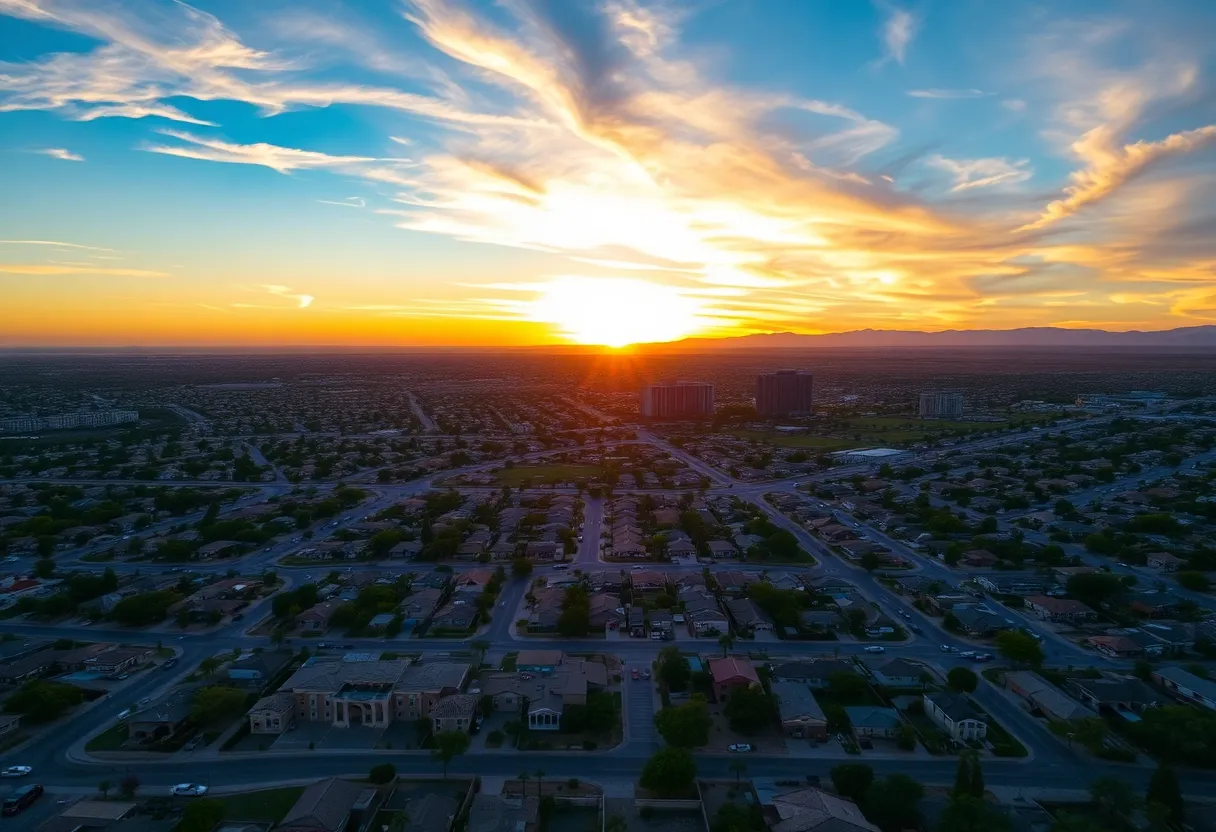5 Must-Ask Questions for Understanding Phoenix’s Real Estate Market
The Phoenix real estate market in 2025 is marked by dynamic shifts that reflect broader economic and demographic trends. To navigate this landscape effectively—whether you’re a buyer, seller, or investor—it’s essential to ask and understand key questions that elucidate current conditions and future prospects. This comprehensive guide offers clarity by addressing the five most important questions shaping Phoenix’s real estate scene this year.
1. What Are the Current Market Conditions in Phoenix?
As of mid-2025, Phoenix is transitioning from an intensely competitive seller’s market into a more balanced or buyer-friendly environment. This change is driven by several measurable indicators:
- Increased Inventory: The number of active listings has surged significantly. In April 2025, approximately 18,700 homes were available for sale—an increase of 467% since the pandemic low three years prior. Such a rise indicates a cooling of the rapid price escalation that characterized earlier years.
- Longer Days on Market (DOM): Homes are now staying listed for an average of 67 days, reflecting an 18.6% increase from the previous year. This trend suggests a shift towards more negotiation and less urgency among buyers.
- Price Adjustments: Home prices have slightly declined, with a 6.9% decrease from their peak in mid-2022. This correction points toward the market approaching equilibrium, reducing the intensity of bidding wars.
Overall, these indicators depict a transition toward a more sustainable market where supply and demand are balancing, offering better opportunities for prospective buyers while still presenting opportunities for sellers to realize gains.
2. How Are Economic Factors Influencing Phoenix’s Market?
Economic fundamentals play a critical role in shaping real estate trends. Several key factors are influencing the Phoenix market:
- Population Growth: Arizona’s population is projected to reach approximately 7.8 million this year. Migration into the region fuels demand, especially as about 1.4% of the population growth stems from net migration. This continuous influx maintains housing demand despite rising inventory.
- Job Market Dynamics: Although a slight increase in unemployment rates is anticipated, sectors like technology, healthcare, and manufacturing continue to create employment opportunities. This stability underpins long-term housing demand and supports market confidence.
- Construction Costs: Proposed tariffs and supply chain disruptions have increased the costs of building materials. Elevated construction costs may lead to higher home prices and limit new supply, exerting upward pressure on existing home values and affecting affordability.
These economic factors collectively influence both demand and the cost of new developments, shaping the overall trajectory of the real estate market in Phoenix.
3. What Are the Trends in Housing Inventory?
The inventory of homes for sale in Phoenix has experienced a notable rise in 2025, signaling a shift toward a more balanced market:
- Surge in Listings: As of May 2025, the total homes for sale in Arizona surpassed 27,000, a level not seen in nearly a decade. Increased listings suggest buyers now have more options, diminishing bidding wars and reducing the urgency to purchase.
- Rise in New Construction: Builders are responding to demand for more inventory, with residential permits rising by 14% year-over-year in 2024. This activity helps alleviate housing shortages and fuel price stabilization.
- Market Balance: At the end of 2024, the housing market’s supply stood at approximately a 3.7-month inventory—an indicator of a more balanced market compared to the previous seller-dominated years.
This trend towards increased inventory is likely to continue if economic conditions remain stable, providing opportunities for buyers to negotiate better deals.
4. How Are Interest Rates Affecting the Market?
Access to affordable financing remains a key driver of market activity in 2025. Currently, mortgage rates hover around 6.5% to 7% for a standard 30-year fixed loan:
- Impact on Affordability: Higher interest rates have constrained first-time buyer activity, as monthly payments become less attractive or affordable. Consequently, many prospective homeowners are leaning towards renting rather than purchasing.
- Potential Market Reactions: If rates stabilize or fall, homeowner confidence may increase—prompting more listings as existing homeowners take advantage of favorable borrowing costs. This could further increase inventory and stabilize prices.
- Future Projections: Should policymakers’ actions lead to declining rates, expect a rise in market activity, especially among entry-level and move-up buyers emerging from increased affordability.
In essence, mortgage interest rates continue to be a critical factor influencing both demand and pricing, with the potential to shift market momentum depending on future movements.
5. What Are the Prospects for the Luxury Market?
The luxury segment in Phoenix shows promising signs of recovery and growth:
- Rebound in Market Confidence: After a period of market pause during election years, luxury home sales are expected to accelerate in the first and second quarters of 2025, as buyer confidence returns and economic conditions stabilize.
- Price Growth in Select Neighborhoods: Areas such as Eloy and Midtown Phoenix have seen median sales prices increase substantially, a testament to ongoing demand at high price points.
- Expansion of High-End Offerings: More neighborhoods are crossing the $1 million median sale price marker, reflecting an influx of affluent buyers and the continual expansion of premium properties.
This segment is poised for robust growth, driven by active high-net-worth individuals seeking exclusive properties, which further enhances the overall market diversity.
FAQ Section
What is the current state of Phoenix’s real estate market?
The market is shifting from a seller’s environment to a more balanced or buyer’s market, with increased listings, longer time on market, and slight price declines. This indicates easing demand pressures and opportunity for negotiations.
How do economic factors influence Phoenix’s real estate trends?
Population growth, job market health, and construction costs are central to market dynamics, affecting demand, affordability, and new supply. These factors underpin the overall stability and growth prospects in the region.
What are the key inventory trends in Phoenix?
Inventory levels are rising, with more listings and new construction activity, leading to a market that is becoming less competitive and more favorable for buyers.
How do interest rates impact the market in Phoenix?
Higher mortgage rates around 6.5–7% have reduced affordability, especially for first-time buyers, but stabilization or drops in rates could stimulate increased market activity.
What are the prospects for the luxury real estate market?
The luxury sector is rebounding, with rising prices and expanding high-end neighborhoods, making it a vibrant part of Phoenix’s overall real estate landscape.
Key Market Features Comparison
| Indicator | 2022 (Peak) | 2025 (Current) |
|---|---|---|
| Homes for Sale | Low (~4,000 homes) | Approx. 18,700 homes |
| Average Days on Market | Under 50 days | 67 days |
| Median Home Price | Peak — significant high | Declined by 6.9% from peak |
| Market Supply (months) | Under 3 months | 3.7 months |
Author: STAFF HERE PHOENIX WRITER
The PHOENIX STAFF WRITER represents the experienced team at HEREPhoenix.com, your go-to source for actionable local news and information in Phoenix, Maricopa County, and beyond. Specializing in "news you can use," we cover essential topics like product reviews for personal and business needs, local business directories, politics, real estate trends, neighborhood insights, and state news affecting the area—with deep expertise drawn from years of dedicated reporting and strong community input, including local press releases and business updates. We deliver top reporting on high-value events such as the Waste Management Phoenix Open, Cactus League Spring Training, and Arizona State Fair. Our coverage extends to key organizations like the Greater Phoenix Chamber of Commerce and Visit Phoenix, plus leading businesses in technology and healthcare that power the local economy such as Intel and Banner Health. As part of the broader HERE network, including HERETucson.com, we provide comprehensive, credible insights into Arizona's dynamic landscape.





